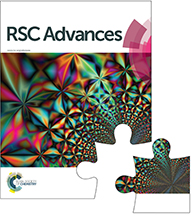Improved electrochemical performance of a LiCoO2/MCMB cell by regulating fluorinated electrolytes
Abstract
High-voltage lithium cobalt oxide (LCO) cathode material always suffers from rapid capacity decay due to irreversible phase transition and unexpected parasitic reactions between the charged LCO and conventional carbonate electrolyte. Here, a series of fluorinated electrolytes containing single or multiple fluorinated solvents were sought to match the high-voltage LCO cathode. The effects of regulating solvent components on the electrolyte properties, interfacial chemistry on both LCO cathode and mesocarbon microbead (MCMB) anode, and electrochemical performance of the LCO/MCMB cell were investigated. It is found that the synergistic effect of the fluorinated solvents obviously improves the reversible capacity and cycle capability for various half/full cell construction, in virtue of enhanced oxidation resistivity of the electrolyte and moderately-modified surface film on the cathode/anode. A novel perfluorinated electrolyte entirely consisting of fluorinated carbonate and fluorinated ether offers superior overall performance for the LCO/MCMB full cell at the upper cut-off voltage of 4.45 V.



 Please wait while we load your content...
Please wait while we load your content...